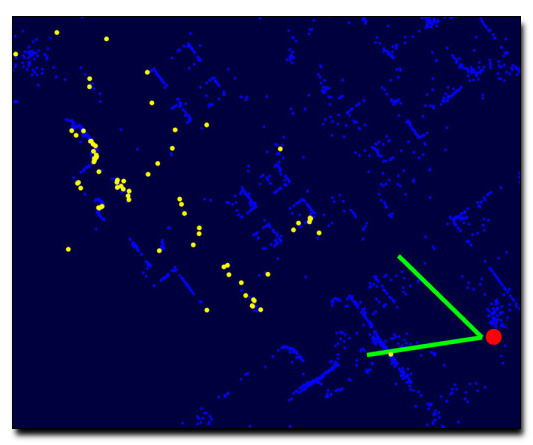Strong Geometric Context for Scene Understanding

Humans are able to recognize objects in a scene almost effortlessly. Our visual system
can easily handle ambiguous settings, like partial occlusions or large variations in viewpoint.
One hypothesis that explains this ability is that we process the scene as a global instance.
Using global contextual reasoning (\eg a car sits on a road, but not on a building facade)
can constrain interpretations of objects to plausible, coherent precepts.
This type of reasoning has been explored in Computer Vision using weak 2D context, mostly
extracted from monocular cues. In this thesis, we explore the benefits of strong
3D context extracted from multiple-view geometry. We demonstrate strong ties between
geometric reasoning and object recognition, effectively bridging
the gap between them to improve scene understanding.
In the first part of this thesis, we describe the basic principles of
structure from motion, which provide strong and reliable
geometric models that can be used for contextual scene understanding.
We present a novel algorithm for camera localization that leverages
search space partitioning to allow a more aggressive filtering of
potential correspondences. We exploit image covisibility using a
coarse-to-fine, prioritized search approach that can recognize scene
landmarks rapidly. This system achieves state of the art results in large-scale camera
localization, especially in difficult scenes with frequently repeated structures.
In the second part of this thesis, we study how to exploit
these strong geometric models and localized cameras to improve recognition. We introduce
an unsupervised training pipeline to generate scene-specific object detectors.
These classifiers outperform state of the art and can be used when
the rough camera location is known. When precise camera pose is available,
we can inject additional geometric cues into novel re-scoring framework to
further improve detection. We demonstrate
the utility of background scene models for false positive pruning, akin to
video-surveillance background subtraction strategies. Finally, we observe that the
increasing availability of mapping data stored in Geographic Information Systems (GIS)
provides strong geo-semantic information that can be used when cameras are located
in world coordinates. We propose a novel contextual reasoning pipeline that
uses lifted 2D GIS models to quickly retrieve precise geo-semantic priors.
We use these cues to to improve object detection and image semantic segmentation, providing a
successful trade-off of false positives that boosts average precision over baseline detection models.
Download: pdf
Text Reference
Raúl Díaz.
Strong Geometric Context for Scene Understanding.
PhD thesis, University of California, Irvine, 10 2016.
BibTeX Reference
@phdthesis{Diaz_THESIS_2016,
author = "D{\'\i}az, Ra{\'u}l",
title = "Strong Geometric Context for Scene Understanding",
booktitle = "PhD Thesis",
school = "University of California, Irvine",
year = "2016",
month = "10"
}
